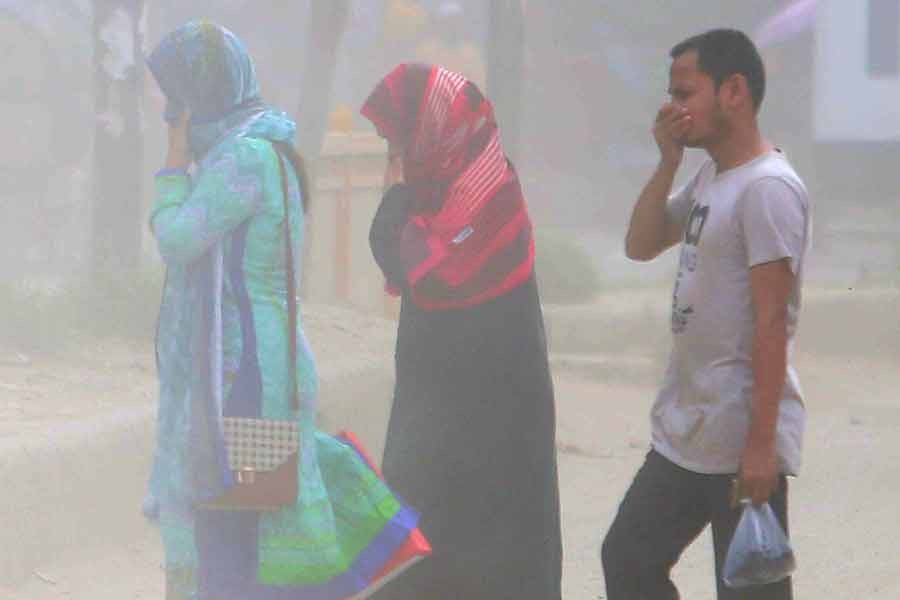The Bangladesh capital has the dubious reputation of recording the highest level of hazardous air quality for nearly a decade. This infamy has been perennial with one or another city of the country. The year of 2020, however, witnessed a relatively acceptable air quality. It was a salubrious break, prompted, ironically, by a one-and-half year shutdown enforced by the government. With the traffic movements witnessing a drastic fall and the fuel-run factories ordered shut, the Bangladesh cities experienced their pollution-free ambience by default. Thus in the recent years, the Air Quality Index (AQI) is largely hinged on urban atmospheric conditions.
Caused mainly by unplanned urbanisation, the deterioration of air quality speaks of ominous developments --- like that related to ground level ozone depletion. From the point of view of socio-economic conditions, Bangladesh cities are unlikely places to become vulnerable to unhealthy AQI. Sudden urban development or spurt in industrialisation in cities contributes to the worsening of the places' air quality. As a city doing nothing to improve its air quality year after year, Dhaka's poor place in the current AQI is a foregone conclusion. In fact, a few newly industrialised cities in the country have also joined the bandwagon. The once sparsely populated towns and cities of Gazipur, Chattogram and Narayanganj are among them.
In general perception, it is the Environmental Protection Agency (EPA) which calculates the AQI for five major air pollutants. It is for this purpose the national air quality standards have been established to safeguard public health. The five pollutants are regulated by Clean Air Act. Each of these pollutants has a national air quality standard set by EPA to protect public health, i.e. ground-level ozone. This year Dhaka ranked the fourth worst in the AQI on December 21. The Bangladesh Air Quality Index had a score of 197. In environmental assessment, it is classified as 'unhealthy'. An AQI between 101 and 200 is considered 'unhealthy', among the sensitive groups in particular. Lahore in Pakistan, Kabul in Afghanistan, and Delhi in India have occupied three top places with their AQI scores at 426, 395 and 224 respectively. These scores are classified as 'hazardous' and 'very unhealthy'. The calculation of air quality has lately become a global practice. It's because the index's rise and decline in a country is entwined with the physical condition of its vulnerable people.
Different countries have their respective unique air quality indices. Thus Australia, Canada, Hong Kong, Mainland China, European countries, India, Mexico, Singapore, South Korea, UK, USA, Vietnam and other countries have their own indices. Since the AQI is directly involved with ensuring a successful battle against air-borne diseases, it is imperative that the parties to air pollution and those battling the scourge were aware of the present pandemic situation. It has been proved, and is now widely known that Covid-19 and its new variant Omicron virus target the human lungs first. In a heavily air polluted environment, human lungs also turn vulnerable. Covid-19 attack exacerbates people's condition with weak lungs. So the country's city corporations should take all necessary steps to keep the vulnerable cities' AQI free of the agents of pollution.


